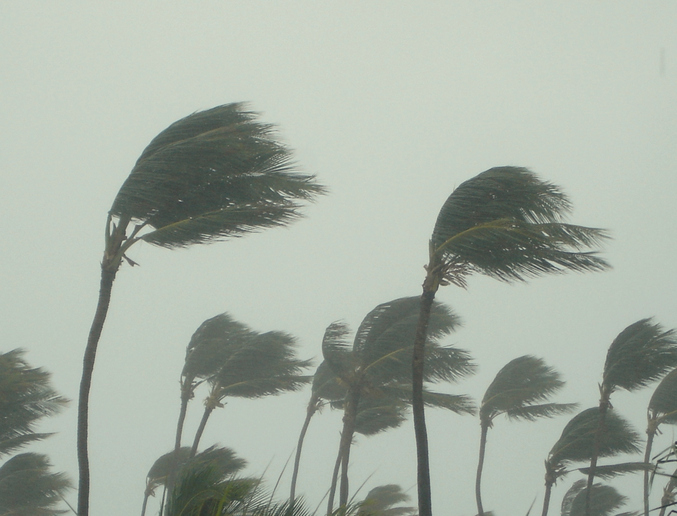Days after Hurricane Michael turned this beachside community into a wreckage-strewn disaster, the longtime resident and others are talking about how they want to bring it back.
Ms. Shoaf, a 64-year-old realtor, said she will build a stronger house that can withstand higher wind speeds—but while trying to recreate the unpretentious, 1950s-era bungalow that she called home.
“It was so quaint,” she said of Mexico Beach. “It didn’t have the great big, new mini mansions that people build now.”
Michael, which roared ashore on Oct. 10 with 155-mile-per-hour winds and a storm surge that swept far inland, was responsible for at least 18 deaths in Florida, Georgia, North Carolina and Virginia, and officials said the toll is likely to climb.
While this city of about 1,200 people is unrecognizable, locals who have trickled back in through security checkpoints described wistfully what it was: a low-key, family-oriented, no-stoplight community that was close geographically, but remote in spirit from the high-rises and spring break party atmosphere of places like Panama City Beach.
Many homes in the most-ravaged parts of the Panhandle were built before statewide codes for new wind-resistant building took effect in 2002, in the wake of Hurricane Andrew. The state standard changes periodically and varies by area, depending on hurricane-probability models.
Most new homes and office buildings in Miami-Dade County must be built to withstand winds of around 175 miles an hour, said John Pistorino, a Miami engineer who consulted on the state codes. That drops to around 120 miles an hour in the Mexico Beach area.
“There is no doubt in my mind that should be raised,” Mr. Pistorino said. In addition, he said, the community will need to elevate buildings because storm surge can be more of a problem than wind.
Mexico Beach’s older houses tended to be the ones that Michael totally destroyed, while places built to current code seemed to fair better, said Rex Putnal, a city councilor whose home was blasted down to a slab.
Mexico Beach Mayor Al Cathey said the community will have to “stick to our guns” to avoid becoming “another high-rise community.”
He said he believes strict local rules will offer some protections. Mexico Beach allows commercial buildings to build to 48 feet, and residential buildings to 32, he said.
But the mayor acknowledged it is going to be hard to recreate exactly what the town had. The “beach cottage character, throwback old Florida—that’s gone,” the 71-year-old said, near his severely damaged hardware store.
By Monday, downed power lines were still draped across streets and the town’s water tower was laying on its side. Black trucks with tandem trailers and a crane traveled through town, cleaning up wood and metal by the claw full. The words “#We Will Rebuild MB” were painted on a steel roof of a building deposited partly on the main road.
“We’re gonna make it work,” said Carlos Vazquez, a 32-year-old mechanic whose home and steel-framed shop were damaged by wind and water. “My kids were born and raised here.”
Some outside observers have suggested a community so obliterated by a storm should consider not rebuilding.
“On a macro level, that makes absolute sense,” said Craig Fugate, former administrator of the Federal Emergency Management Agency from 2009 to 2017. “It’s a lot harder when you’re talking to someone whose family has lived in that house for three generations.”
Mr. Fugate said rebuilding if it happens should be done in a different way. He said the construction, for instance, will “probably need to go inland a couple blocks” and homes will need to be elevated. None of that will be cheap, and he said some people may end up selling their land—which could lead to higher density. The challenges include preserving the charm of the hard-hit Panhandle communities and not pricing out people who can’t afford to build more resilient homes, he said.
Not everyone is worried about bigger homes rising on storm-cleared land. Kara Crouse, whose husband co-owns a destroyed seafood restaurant, said they aim to rebuild, and that redevelopment could deliver needed business.
“It won’t be the way it was, but it will come back,” Ms. Crouse said of the city.
Authorities are still trying to sort out how to rebuild and provide basic services. They warned a broken sewage system could start to back up. The local electricity infrastructure will require “extensive reconstruction,” Duke Energy Corp. said.
Pandy Singleton and her husband, Larry, both in their 60s, live in Tennessee but went to their home in Mexico Beach every chance they could. They were part of a close-knit group of neighbors that held picnics and parades.
She now worries their friends won’t return. “Even if you build back, do you want to be there alone?” she said.
For Mr. Putnal and his wife, Gayle, it’s too early to say if they’ll rebuild, although he said they did have flood and wind insurance. Ms. Putnal, 68, said living there “was like turning the clock back to your childhood.”
Residents worked hard to keep it that way, banding together to fight one big proposed condominium development a few years ago, she said. “We said, ‘thank you, but no thank you.’ We really prefer to just stay a family beach.”













